Shift Engineer
100+ Shift Engineer Interview Questions and Answers

Asked in JLL

Q. Safety of DG set 1.high water temperature 2.overspeed 3.coolant level 4.oil pressure from 2.5 to 7.5kg/cm2
Safety of DG set is ensured by monitoring high water temperature, overspeed, coolant level, and oil pressure within specified ranges.
Monitor water temperature to prevent overheating and potential damage to the engine.
Ensure the DG set does not exceed its maximum speed limit to prevent mechanical failures.
Regularly check coolant level to avoid overheating and maintain proper engine function.
Maintain oil pressure within the recommended range (2.5 to 7.5kg/cm2) to ensure proper ...read more
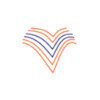
Asked in Vaaman Engineers

Q. What is the process of topping up oil in a fluid coupling?
The process of oil top-up in a fluid coupling involves adding oil to maintain the desired level and ensure proper functioning.
Check the oil level in the fluid coupling regularly
Identify the oil fill point on the fluid coupling
Use the appropriate type and grade of oil recommended by the manufacturer
Slowly pour the oil into the fill point until the desired level is reached
Avoid overfilling the fluid coupling as it can lead to overheating or leakage
Monitor the oil level after to...read more
Shift Engineer Interview Questions and Answers for Freshers
Asked in ONE INTERNATIONAL CENTER

Q. If all your lower side equipment, like chillers, are working normally, why are you not getting cool air from the AHU?
The issue could be with the air handling unit (AHU) itself or with the ductwork.
Check if the AHU is running and if the fan is working properly.
Inspect the ductwork for any blockages or leaks.
Verify that the thermostat is set correctly and functioning properly.
Check the air filters and replace if necessary.
Ensure that the dampers are open and allowing air to flow through the system.
Consider the possibility of a refrigerant leak in the AHU or the chiller system.
Perform a thorou...read more

Asked in Diversey India Hygiene

Q. What are the key tools of lean manufacturing & Describe KANBAN?
Key tools of lean manufacturing include KANBAN, 5S, and Value Stream Mapping.
KANBAN is a visual scheduling system used to manage inventory and production flow.
5S is a workplace organization method that involves sorting, simplifying, sweeping, standardizing, and sustaining.
Value Stream Mapping is a tool used to analyze and improve the flow of materials and information in a process.
Other tools include Just-In-Time (JIT) production, Total Productive Maintenance (TPM), and Contin...read more

Asked in Thermax Limited

Q. What could cause a gradual decrease in condenser vacuum?
Condenser vacuum gradually lowering trend may be due to air leakage, cooling water temperature increase, or decrease in cooling water flow rate.
Air leakage in the condenser system can lead to a decrease in vacuum levels.
Increase in cooling water temperature can reduce the efficiency of the condenser, causing vacuum levels to drop.
Decrease in cooling water flow rate can also impact the condenser's ability to maintain proper vacuum levels.

Asked in Suzlon Group

Q. Type of generator? & which type of generator suzlon use & why that generator use instead of other?
Suzlon uses wind turbines as generators for renewable energy production.
Suzlon primarily uses wind turbines as generators for renewable energy production.
Wind turbines convert wind energy into electrical energy.
Suzlon's wind turbines are designed to efficiently capture wind energy and convert it into electricity.
These generators are used because wind energy is a clean and renewable source of power.
Wind turbines are environmentally friendly and help reduce greenhouse gas emiss...read more
Shift Engineer Jobs




Asked in Surelock Plastics

Q. How do you handle vendor quotations when sourcing new parts?
This is not a clear question. Please provide more context.
Please provide more information about what you mean by 'tear parts new making'
Are you asking if we should make new parts before getting a vendor quote?
Please clarify the question so I can provide a proper answer.

Asked in APOLLO POWER SYSTEMS

Q. What is an Uninterruptible Power Supply (UPS), and what are its functions?
A UPS is a device that provides emergency power to a load when the input power source fails.
UPS ensures continuous power supply during power outages or fluctuations.
It protects sensitive electronic equipment from damage due to sudden power loss.
UPS can be used in data centers, hospitals, and critical infrastructure to prevent data loss or downtime.
Types of UPS include offline, line-interactive, and online double-conversion UPS.
Share interview questions and help millions of jobseekers 🌟


Asked in Kanoria Chemicals & Industries

Q. What is the difference between boiling point, fire point, and flash point?
Boiling point is the temperature at which a liquid turns into vapor, fire point is the temperature at which a substance can ignite and sustain combustion, and flash point is the temperature at which a substance gives off enough vapor to ignite momentarily.
Boiling point is the temperature at which a liquid changes into vapor by overcoming atmospheric pressure.
Fire point is the temperature at which a substance can ignite and sustain combustion.
Flash point is the temperature at ...read more
Asked in Tapadia Polyesters

Q. 2 Do you know how to read and draw electrical drawing
Yes, I have experience in reading and drawing electrical drawings.
I have studied electrical engineering and have experience in reading and interpreting electrical drawings.
I am familiar with symbols and conventions used in electrical drawings.
I have used software such as AutoCAD and SolidWorks to create electrical drawings.
I have worked on projects where I had to modify existing electrical drawings.
I am comfortable working with schematics, wiring diagrams, and panel layouts.

Asked in Vaaman Engineers

Q. What observations are important during a conveyor inspection?
During conveyor inspection, you need to observe various aspects to ensure its proper functioning.
Check for any signs of wear and tear on the conveyor belt
Inspect the rollers and ensure they are rotating smoothly
Look for any loose or damaged components, such as bolts or fasteners
Check the tension of the conveyor belt and adjust if necessary
Observe the alignment of the belt and make any necessary adjustments
Inspect the conveyor motor and ensure it is running properly
Check for a...read more

Asked in Danblock Brakes

Q. What is work . What is physical energy & Formula. What is static & Dynamic energy. How to manage shift manpower. What is knowledge of SAP. What to calculate production Hourly . What is types of tags .
Work is the application of physical energy to accomplish a task. It can be calculated using the formula work = force × distance.
Work is the transfer of energy that occurs when a force is applied to an object and it moves in the direction of the force.
The formula to calculate work is work = force × distance.
Physical energy is the energy possessed by an object due to its motion or position.
Static energy refers to the potential energy stored in an object at rest, while dynamic e...read more

Asked in Kanoria Chemicals & Industries

Q. What percentage of oxygen is required in a confined space?
The required oxygen percentage in a confined space is typically between 19.5% and 23.5%.
Oxygen percentage in a confined space should be maintained between 19.5% and 23.5% for safe working conditions.
Levels below 19.5% can lead to hypoxia (oxygen deficiency) and levels above 23.5% can increase the risk of fire.
It is important to regularly monitor and test the oxygen levels in confined spaces to ensure safety.
Proper ventilation and use of respiratory protective equipment may be...read more
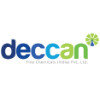
Asked in Deccan Fine Chemicals

Q. What equipment is used, and what safety precautions are taken when charging chemicals?
Equipment and safety precautions are followed for chemicals charging.
Equipment such as pumps, hoses, and tanks are used for charging chemicals.
Safety precautions include wearing personal protective equipment (PPE) such as gloves, goggles, and respirators.
Chemicals are stored and handled in accordance with Material Safety Data Sheets (MSDS).
Proper ventilation is maintained to prevent exposure to hazardous fumes.
Spill containment measures are in place in case of accidental spil...read more
Asked in Maa Kudargarhi Steels

Q. What types of faults can occur in DC motors and DC drives?
It is difficult to provide an exact number as it depends on various factors such as maintenance, usage, and age of the equipment.
The number of faults in DC motors and drives can vary depending on the specific equipment and its usage.
Regular maintenance and proper usage can help reduce the number of faults.
Age of the equipment can also play a role in the frequency of faults.
Examples of faults include overheating, worn out brushes, and electrical faults.
It is important to have ...read more
Asked in Saudi Carbonate Company

Q. Why is safety necessary when performing factory work?
Safety is necessary for performing factory works to prevent accidents, injuries, and health hazards.
Safety measures ensure the well-being of workers and minimize the risk of accidents.
Compliance with safety regulations reduces the likelihood of injuries and legal consequences.
Safe working conditions improve productivity and efficiency.
Safety protocols protect workers from exposure to hazardous substances or dangerous machinery.
Accidents can result in financial losses for the ...read more
Asked in Denali Management Services

Q. What is the working process of a water treatment plant, specifically regarding its operations?
The working process of a water treatment plant involves multiple steps to purify water for consumption and other uses.
Water intake from a natural source such as a river or lake
Physical processes like screening and sedimentation to remove large particles
Chemical processes like coagulation and disinfection to remove contaminants
Biological processes like filtration and chlorination to further purify the water
Distribution of treated water to consumers through a network of pipes

Asked in JSW Steel

Q. What safety precautions should be maintained during conveyor operation?
Safety precautions in conveyor operation are crucial to prevent accidents and injuries.
Regular maintenance of conveyor belts and equipment
Proper training for employees on safe operation procedures
Use of guards and emergency stop buttons
Regular inspection of conveyor systems for wear and tear
Proper handling of materials to prevent jams or blockages
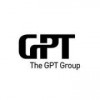
Asked in GPT Group

Q. How do you handle critical situations involving electrical equipment failure and breakdown?
Effective response to electrical equipment failure involves assessment, communication, and systematic troubleshooting.
Assess the situation: Quickly evaluate the extent of the failure and identify affected equipment.
Ensure safety: Prioritize safety by de-energizing equipment and using appropriate PPE.
Communicate: Inform relevant personnel and stakeholders about the situation and potential impacts.
Troubleshoot systematically: Follow established protocols to diagnose the issue, ...read more
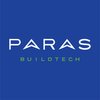
Asked in Paras Buildtech

Q. What is power factor, and what are the different types of power factor?
Power factor is the ratio of real power to apparent power. Types include leading, lagging, and unity power factor.
Power factor is a measure of how efficiently electrical power is being used.
It is calculated by dividing real power (measured in watts) by apparent power (measured in volt-amperes).
A power factor of 1 (or unity) means all the power is being used efficiently, while a power factor less than 1 means some power is being wasted.
Leading power factor occurs when the curr...read more

Asked in Kimplas Piping System

Q. injection moulding m/c exprience of vertical,horizontal and double injection unit, two colour moulding.
Experienced in vertical, horizontal, and double injection molding, including two-color molding techniques.
Vertical injection molding machines are ideal for small parts and allow for easy automation.
Horizontal injection molding is commonly used for larger parts and offers better material flow.
Double injection units enable the production of complex parts with different materials or colors in a single cycle.
Two-color molding allows for aesthetic and functional enhancements, such...read more

Asked in Gujarat Fluorochemicals

Q. Do you know the principle of dcs ? How it works?
DCS (Distributed Control System) manages complex processes through decentralized control and monitoring.
DCS consists of multiple controllers distributed throughout the system, allowing for localized control.
It enhances reliability by reducing the risk of a single point of failure.
DCS systems often include a Human-Machine Interface (HMI) for operators to monitor and control processes.
Example: In a chemical plant, DCS can control temperature, pressure, and flow rates across var...read more
Asked in Denali Management Services

Q. What parameters are considered in sewage treatment plants?
Parameters considered in sewage treatment plants include pH levels, temperature, dissolved oxygen, biochemical oxygen demand, and total suspended solids.
pH levels: Ensuring the pH levels are within the optimal range for biological processes.
Temperature: Monitoring temperature to maintain optimal conditions for microbial activity.
Dissolved oxygen: Adequate levels of dissolved oxygen are necessary for aerobic treatment processes.
Biochemical oxygen demand (BOD): Measuring BOD he...read more
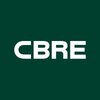
Asked in CBRE

Q. What are the BOD and COD levels in an STP plant?
BOD and COD are measurements used in STP plants to assess the organic pollution levels in wastewater.
BOD stands for Biochemical Oxygen Demand and measures the amount of dissolved oxygen required by microorganisms to break down organic matter in wastewater.
COD stands for Chemical Oxygen Demand and measures the amount of oxygen required to chemically oxidize organic and inorganic matter in wastewater.
Both BOD and COD are indicators of the organic pollution levels in wastewater ...read more


Q. What is a transformer and how does it work?
A transformer is an electrical device that transfers electrical energy between two or more circuits through electromagnetic induction.
Consists of two coils of wire, known as primary and secondary coils
Primary coil is connected to a power source, creating a magnetic field when current flows through it
Magnetic field induces a voltage in the secondary coil, transferring energy to the load connected to it
Transformer can step up or step down voltage depending on the number of turn...read more
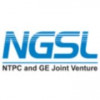
Asked in NTPC GE Power Services

Q. What was the capacity of your previous plant?
My previous plant capacity was 5000 units per day.
My previous plant had a capacity of 5000 units per day.
I was responsible for managing the production of 5000 units per day in my previous plant.
The previous plant I worked at had a daily production capacity of 5000 units.

Asked in Colliers India

Q. What are the possible reasons for an alternator failing to start?
There can be multiple causes for an alternator to not start.
Dead battery
Faulty alternator
Broken or loose belts
Faulty voltage regulator
Bad wiring or connections
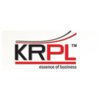
Asked in K.R.Pulp & Papers

Q. What is Power plant operation and maintenance.
Power plant operation and maintenance involves the continuous monitoring, inspection, and repair of equipment to ensure efficient and safe functioning.
Regular monitoring of equipment performance
Scheduled inspections and maintenance activities
Prompt repairs of any faults or failures
Ensuring compliance with safety regulations
Optimizing plant efficiency through proper maintenance practices

Asked in Reliance Industries

Q. What knowledge do you have about the operations you would be handling?
As a Shift Engineer, I manage operations, ensuring equipment efficiency and safety in a production environment.
Monitor and maintain machinery to ensure optimal performance, e.g., conducting regular inspections.
Troubleshoot equipment failures and implement corrective actions, such as replacing faulty components.
Coordinate with team members to ensure smooth operations during shifts, e.g., assigning tasks based on expertise.
Document operational data and maintenance activities fo...read more

Asked in Paras Buildtech

Q. What kind of coil is used in the ACB?
The type of coil used in an ACB (Air Circuit Breaker) varies depending on the specific model and manufacturer.
ACBs can use different types of coils such as electromagnetic coils or solid-state coils.
Electromagnetic coils use a magnetic field to generate the necessary force to open or close the circuit breaker.
Solid-state coils use electronic components to control the operation of the ACB.
The choice of coil depends on factors like the voltage rating, current rating, and applic...read more
Interview Questions of Similar Designations
Interview Experiences of Popular Companies




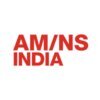

Calculate your in-hand salary
Confused about how your in-hand salary is calculated? Enter your annual salary (CTC) and get your in-hand salary


Reviews
Interviews
Salaries
Users










